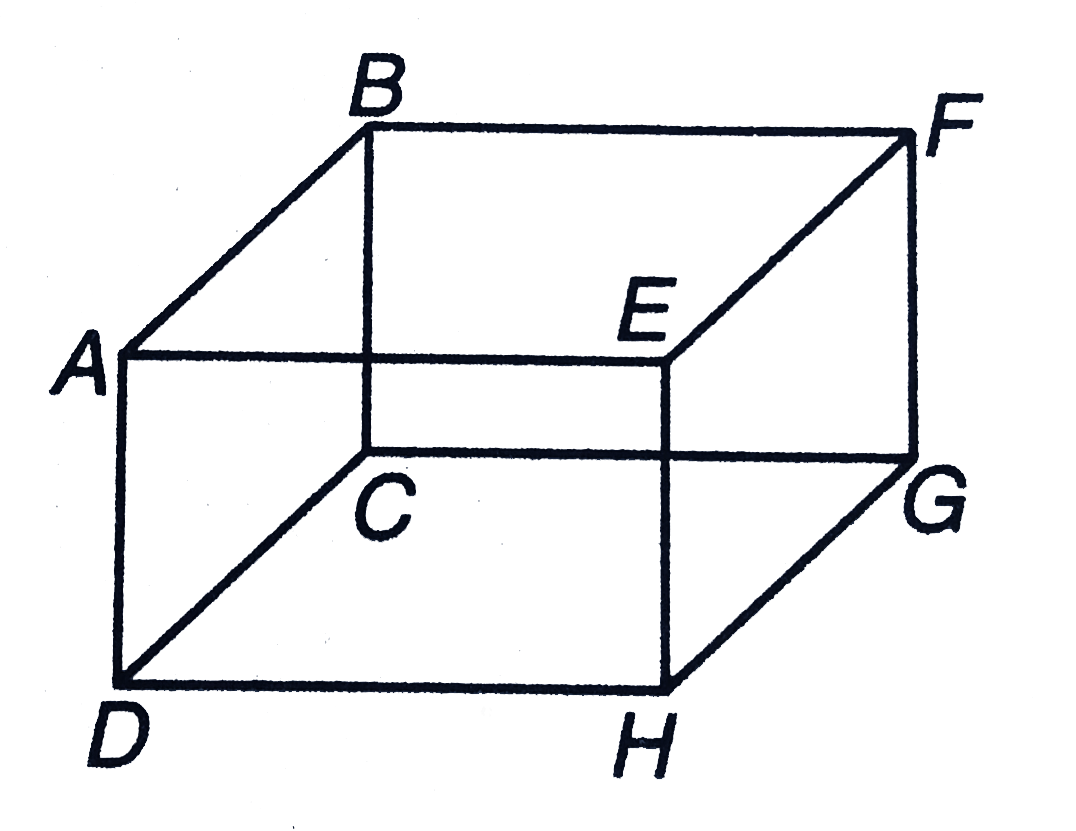A charge Q is situated inside a cube placed in air. The electric flux passing through all the six faces is Solution in Bengali
Qε0
Q2ε0
Q6ε0
Q8ε0
According to Gauss' theorem, electric flux =Qε0
The option (A) is correct.
Topper's Solved these Questions
- ELECTRIC FIELDBOOK - CHHAYA PUBLICATIONCHAPTER - ELECTRIC FIELDEXERCISE - EXAMINATION ARCHIVE (WBJEE)
13 Videos
- ELECTRIC FIELDBOOK - CHHAYA PUBLICATIONCHAPTER - ELECTRIC FIELDEXERCISE - EXAMINATION ARCHIVE ( JEE MAIN )
3 Videos
- ELECTRIC FIELDBOOK - CHHAYA PUBLICATIONCHAPTER - ELECTRIC FIELDEXERCISE - ENTRACNCE CORNER ( INTEGER ANSWER TYPE )
4 Videos
- ELECTRIC ENERGY AND POWERBOOK - CHHAYA PUBLICATIONCHAPTER - ELECTRIC ENERGY AND POWEREXERCISE - CBSE SCANNER
7 Videos
- ELECTRIC POTENTIAL BOOK - CHHAYA PUBLICATIONCHAPTER - ELECTRIC POTENTIAL EXERCISE - CBSE Scanner
13 Videos
Similar Questions
A line AA' is on a charged infinite conducting plane which is perpendicular to the plane of the paper. The plane has a surface density of charge σ and B is a ball of mass m with a like charge of magnitude q.B is connected by a string from a point on the line AA'. The tangent of the angle (θ) formed between the line AA' and the string is

View SolutionA long cylindrical shell carries positive surface charge σ in the upper half and negative surface charge −σ in the lower half. The electric field lines around the cylinder will look like figure given in (figures are schematic and not drawn to scale)
View SolutionTwo charges 2Q and −Q are placed at the points (a,0,0) and (4a,0,0) respectively. With the two charges situated at the cenres, two spheres of radii 2a and 8a are considered. What is the ratio of electric flux through the surfaces of the two spheres?
View SolutionA light bulb is rated 100 W for 220 V ac supply of 50 Hz. Calculate
the resistance of the bulb ,
View SolutionA test charge q is moved without acceleration along the path from A to B from B to C in electric field E as shown in fig.

(i) Calculate the potential difference between A and C.
View SolutionA charge q is placed at the centre of a cube of side l what is the electric flux passing through two opposite faces of the cube ?
View SolutionA charge Q is situated at the corner of a cube the electric flux passed through all the six faces of the cube is :
View SolutionA charge Q is situated at the corner of a cube, the electric flux passing through all the six faces of the cube is :
View SolutionA charge q is placed at the centre of a cube. What is the electric flux passing through two opposite faces of the cube ?
View Solutionएक आवेश Q , एक घन के केंद्र पर रखा जाता है। घन के सभी छः फलकों में से गुजरने वाला वैधुत फ्लक्स है
View SolutionA charge q is placed at the centre of a cube of side l what is the electric flux passing through two opposite faces of the cube ?
View SolutionA charge q is placed at point D of the cube. Find the electric flux passing through the EFGH and face AEHD.

View SolutionA charge Q is situated inside a cube placed in air. The electric flux passing through all the six faces is-
View SolutionA charge q is placed at the centre of a cube of side l what is the electric flux passing through two opposite faces of the cube ?
View SolutionA charge q is placed at the centre of a cube of side l. What is the electric flux passing through each face of the cube?
View SolutionA charge Q is situated at the corner of a cube, the electric flux passing through all the six faces of the cube is :
View Solution
